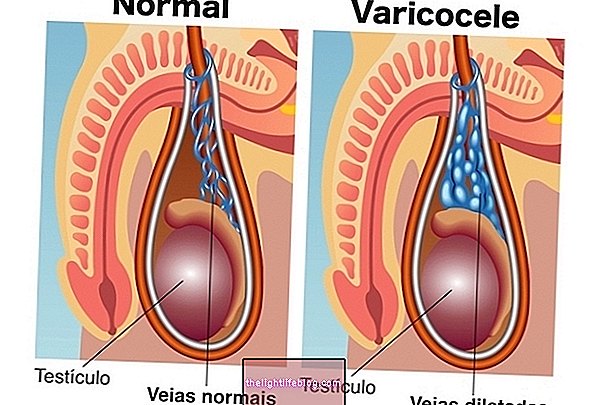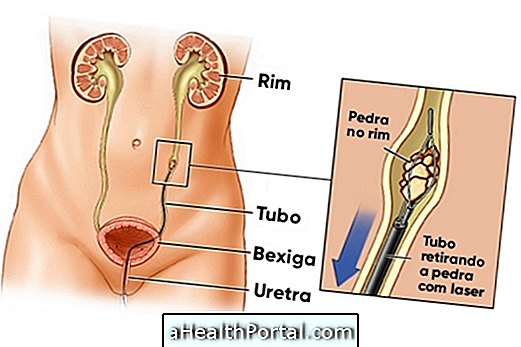Pyeloplasty is a surgical procedure indicated in the case of changes in the connection between the ureter and the kidney, which can lead, in the long run, to kidney dysfunction and failure. Thus, this procedure aims to restore this connection, preventing the appearance of complications.
Pyeloplasty is relatively simple, it is only necessary for the person to stay in the hospital for a few days to be followed up, and then he is released home, and the treatment must be continued at home with rest and use of antibiotics indicated by the urologist.

What is it for
Pyeloplasty is a surgical procedure indicated in cases of stenosis of the uretero-pelvic junction, which corresponds to the union of the kidney with the ureter. That is, in this situation the narrowing of this connection is verified, which can promote a decrease in urinary flow and result in kidney damage and progressive loss of function. Thus, pyeloplasty aims to restore this connection, restoring the flow of urine and decreasing the risk of kidney complications.
Thus, pyeloplasty is indicated when the person has symptoms related to the stenosis of the uretero-pelvic junction and changes in laboratory tests, such as urea levels, creatinine and creatinine clearance, and imaging tests, such as abdominal ultrasound and computed tomography.
How it is done
Before performing pyeloplasty, it is recommended that the person is fasting for about 8 hours, being allowed only the consumption of liquids, such as water and coconut water.The type of surgery depends on the person's age and general health, and the following can be recommended:
- Open surgery: in which a cut is made in the abdominal region in order to correct the connection between the ureter and the kidney;
- Laparoscopy pieloplasty: this type of procedure is less invasive, since it is performed through 3 small incisions in the abdomen, and promotes faster recovery to the person.
Regardless of the type of surgery, a cut is made in the connection between the ureter and the kidney and then restoration of that connection. During the procedure, a catheter is also placed to drain the kidney and reduce the risk of complications, which must then be removed by the doctor who performed the surgical procedure.
Recovery from pyeloplasty
After pieloplasty, it is common for the person to stay 1 to 2 days in the hospital to recover from anesthesia and to check for the development of any symptoms, thus preventing complications. In cases where a catheter has been inserted, it is recommended that the person return to the doctor to have it removed.
At home, it is important that the person remains at rest, avoiding efforts for about 30 days and drink plenty of fluids, in addition to using the medications indicated by the doctor. Usually, the use of antibiotics is recommended by the doctor to prevent the occurrence of infections.
The recovery from pyeloplasty is relatively simple, and it is only necessary that after the recovery period stipulated by the doctor, the person returns to the consultation so that image exams can be performed to verify if the surgery was sufficient to correct the change.
If during the recovery period the person has a high fever, excessive bleeding, pain when urinating or vomiting, it is important that you return to the doctor for an evaluation to be carried out and the most appropriate treatment can be started.
Was this information helpful?
Yes No
Your opinion is important! Write here how we can improve our text:
Any questions? Click here to be answered.
Email in which you want to receive a reply:
Check the confirmation email we sent you.
Your name:
Reason for visit:
--- Choose your reason --- DiseaseLive betterHelp another personGain knowledge
Are you a health professional?
NoMedicalPharmaceuticalsNurseNutritionistBiomedicalPhysiotherapistBeauticianOther
Bibliography
- MCANINCH, Jack W .; LUE, Tom F. General Urology of Smith and Tanagho. 18th ed. Porto Alegre: Artmed, 2014. 144-145.
- MORÃO, Sofia; VITAL, Vanda P .; SILVA, Aline V. et al. Laparoscopic Pieloplasty in Pediatric Age. Portuguese Urological ACTA. Vol 32. 28-32, 2017
- BARRIL, Emelyn S .; ALBA, Anna Paula R .; OLIVEIRA, Antônio Vinícius P. et al. Stenosis of the ureteral pielo junction. Rev. Fac. Ciênc. Méd. Sorocaba. Vol 16. 3 ed; 155-156, 2014
- UROLOGY PORTAL. JUP Obstruction: Surgical Indication. Available in: . Accessed on 06 Jul 2020






















